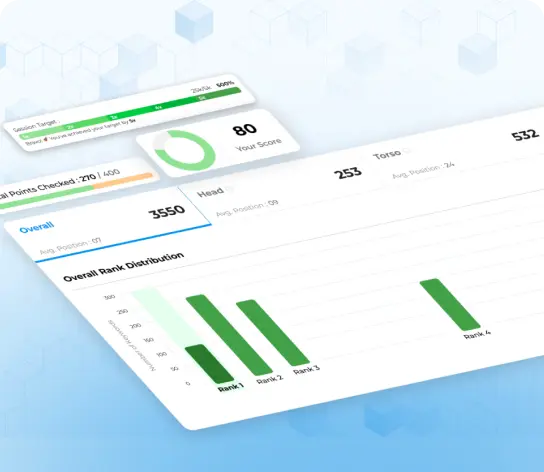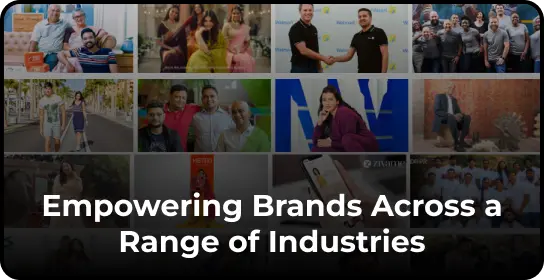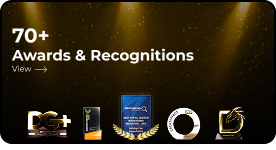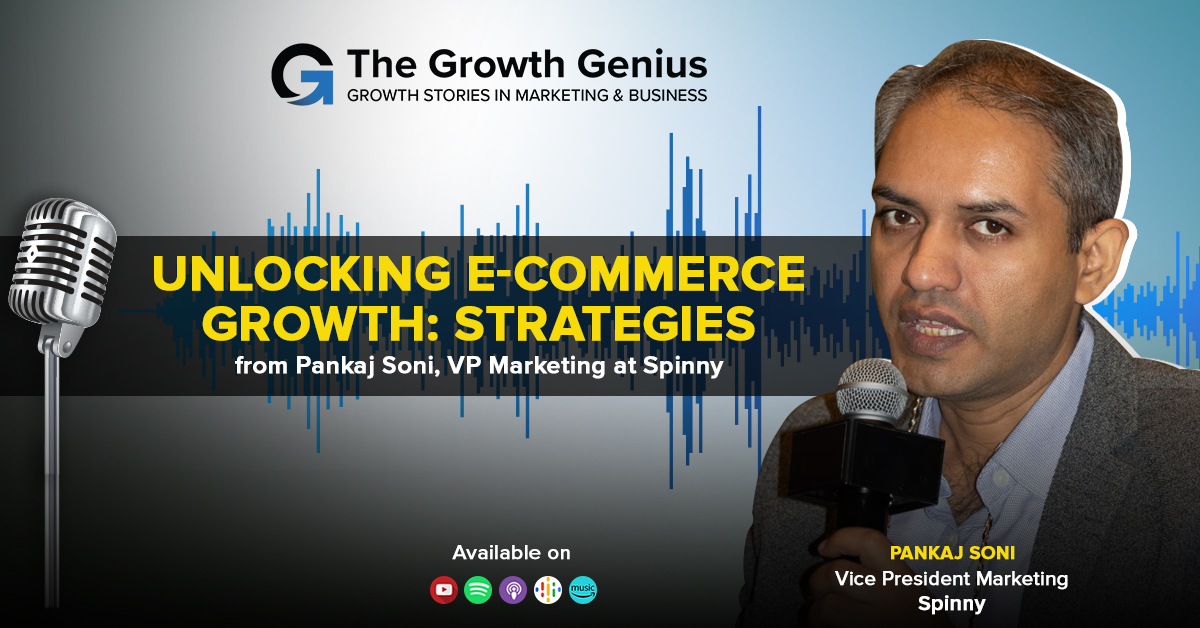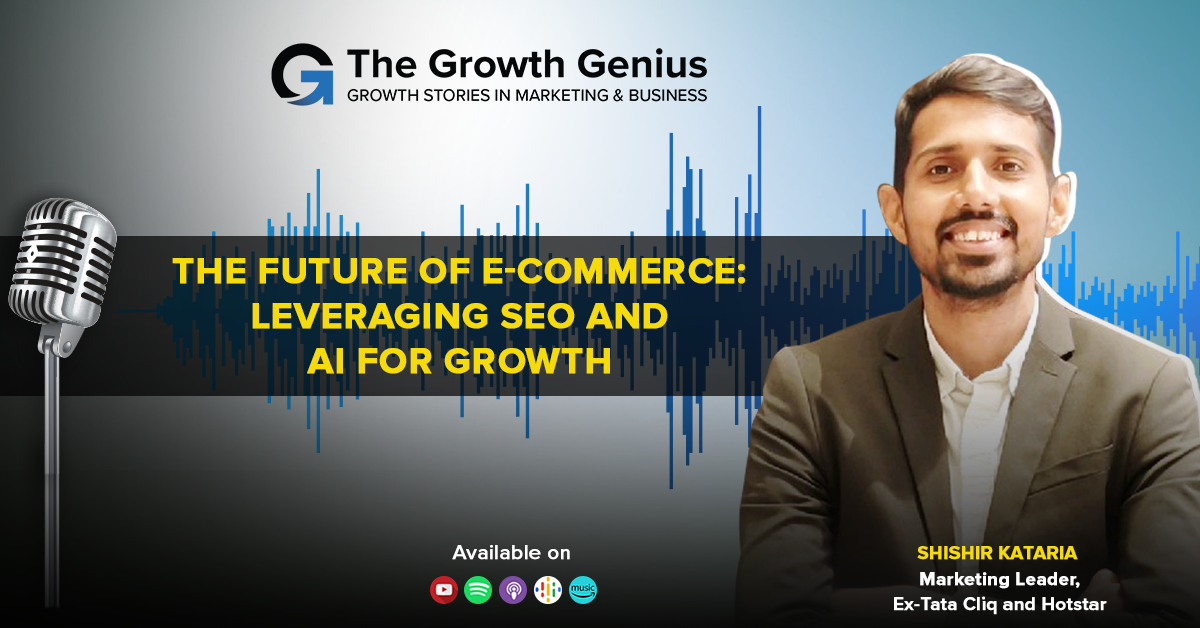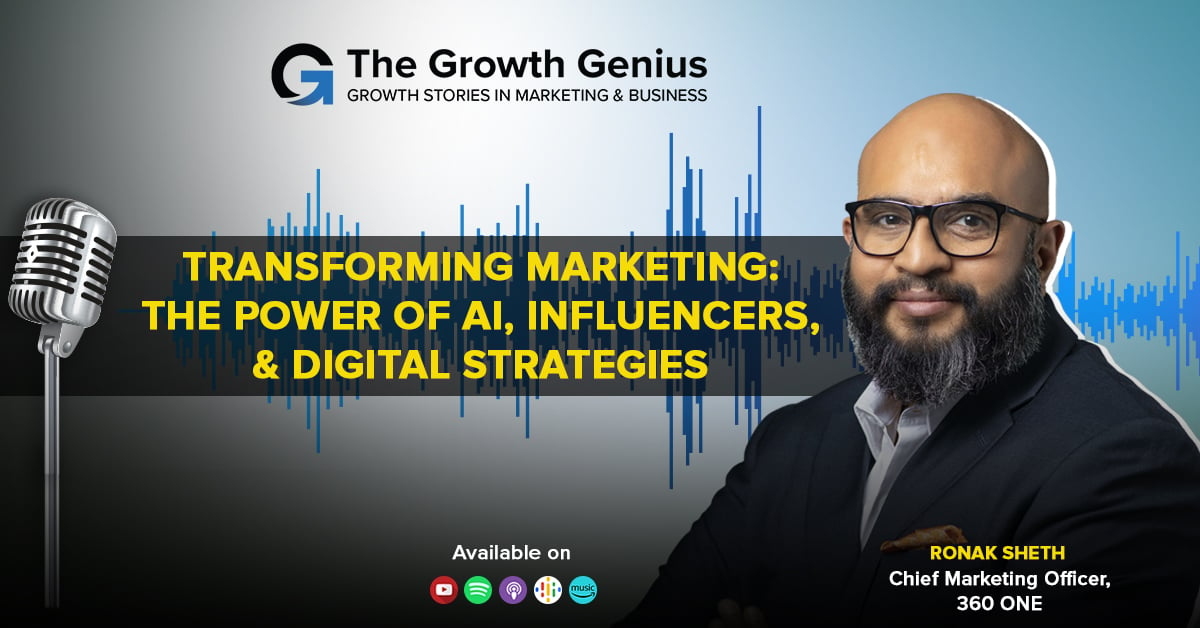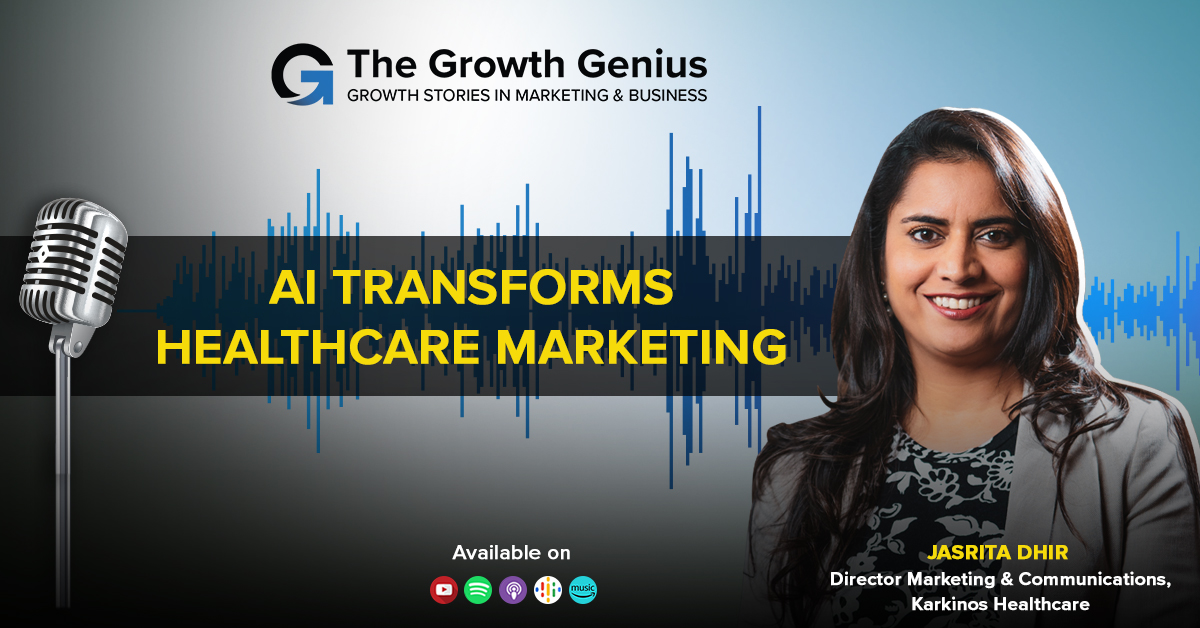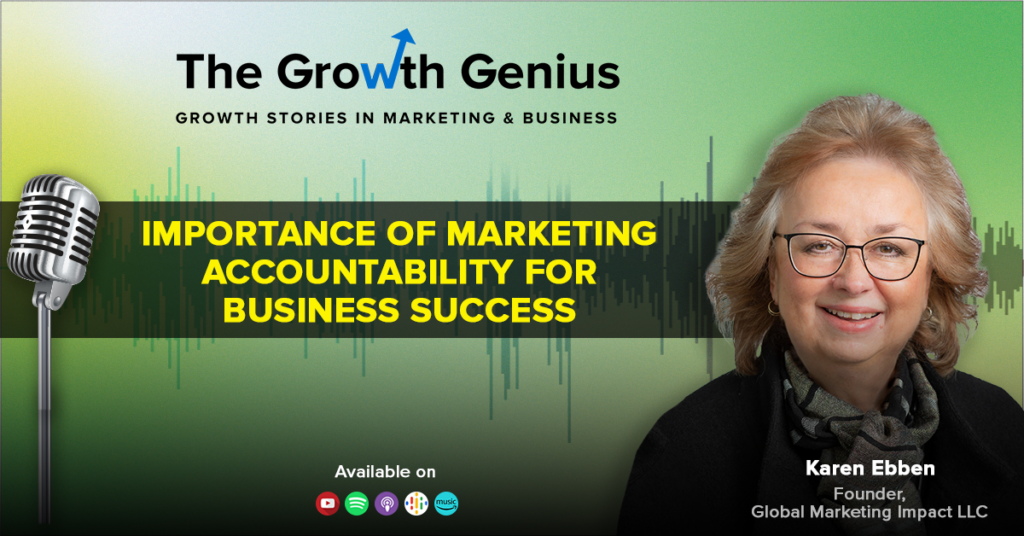Let’s Connect & Accelerate Your Organic Growth
- Your data is properly secured encrypted by SSL
|
Getting your Trinity Audio player ready...
|
Listen on your Podcast app
Summary
In this podcast episode, Karen Ebben discusses the impact of global marketing. She emphasizes the importance of understanding cultural differences and tailoring marketing strategies accordingly. Ebben highlights the need for localization and adaptation to effectively reach international audiences. She also emphasizes the role of technology in enabling global marketing efforts, such as social media platforms and data analytics. Ebben shares insights on how companies can navigate challenges in global marketing, including language barriers and legal considerations. Overall, this podcast provides valuable insights into the significance of global marketing and offers practical advice for businesses looking to expand their reach in international markets.
Key Take Aways
The blog “Global Marketing Impact” by Karen Ebben provides valuable insights for digital marketers. Eight key takeaways from this blog include:
- Understanding the local market: Digital marketers should have a deep understanding of the local market they are targeting to create effective marketing strategies.
- Cultural sensitivity: Being culturally sensitive is crucial to avoid any misinterpretations or offensive content that may harm the brand’s reputation.
- Localization: Adapting marketing campaigns to suit the local language, preferences, and customs is essential for success in global markets.
- Social media platforms: Digital marketers should identify the most popular social media platforms in each market and utilize them effectively to reach the target audience.
- Influencer marketing: Collaborating with local influencers can help digital marketers gain credibility and reach a wider audience.
- SEO localization: Optimizing websites and content for local search engines and keywords is vital to improve visibility and organic traffic.
- Mobile-first approach: Given the increasing use of mobile devices globally, digital marketers should prioritize mobile optimization for websites and campaigns.
- Data-driven decision-making: Collecting and analyzing data from different markets can provide valuable insights to make informed marketing decisions and improve campaign performance.
By considering these key takeaways, digital marketers can enhance their global marketing strategies and achieve better results in diverse markets.
Read Transcript
Karen Ebben:- Marketing accountability is really being able to demonstrate the impact that marketing is having on the business and quite frankly there’s really a difference between the language of marketers and the language of finance. So finance folks will focus on ROI, return on investment and you’ll have marketing folks that are looking at return of objective meaning with the evolution of AI, as fast as it’s going there are some things that you can counter or that AI hasn’t been able to get to yet that need to be enhanced and that is creating emotion like I talked about with that Mont Blanc campaign.
Shelly Singh:- Hello and welcome to The Growth Genius series brought to you by DMAaAsia and infidigit. My name is Shelly and I’m your host. Today we have Karen Ebben, President, Global Marketing Impact. She’s an accomplished Fortune 50 marketing and advertising executive with global analytics, research and consumer insights experience. She recently spearheaded a centre of expertise for measuring the contributions of marketing to overall business performance. Karen is a consultant specializing in improving marketing effectiveness. Prior to establishing her practice in 2017, she was the director of global advertising and marketing effectiveness for General Motors where she accelerated improvements in marketing accountability globally. Outside of GM, Karen is a MASP, Marketing Accountability Standards Board director where she leads many initiatives. She’s an adjunct faculty member of Saint John’s University. She’s a mentor to tech and female-led start-ups. To further her support for women entrepreneurs, Karen is a limited partner with the Bell Michigan impact Fund, a 20 million fund which invests in high growth female-led start-ups. Great to have you, Karen.
Karen:- Thank you. Thank you so much, Shelly, it’s great to be here.
Shelly:- Great. So you have such an impressive profile with the leading role in General Motors serving on the boards of various organizations, please tell us about your background and your professional journey.
Karen:- So my background is I spent 40 plus years in sales service marketing and analytics in both a client role and a senior leadership role. So I’ve held CML positions for a number of brands but I’ve also supported the CMOs as a client, not just in my consulting practice but in my former life when I led insights and did a lot of marketing effectiveness work. So I think it gives me a bit of a unique perspective on some of the challenges that CMOs have because, one, I’ve walked in those shoes and literally experienced those challenges, but, two, I’ve also been on the measurement and looking for where is there proof in terms of what works, what doesn’t work, what works best and how. So, my entire career has been spent building a bridge, believe it or not, between marketing and finance. So when you work a lot of years in automotive, most of the people have either finance or engineering background, so they’re very linear, very analytical and not necessarily akin to, you know, some of the softer marketing work, or it’s perceived to be softer but it doesn’t have to be. It can be very quantifiable and very accountable. And so I’ve kind of built this bridge between both marketing and finance in terms of building a bridge between the two so that there’s better dialogue and better decisions about what needs to happen for the business and more accountability as a result of that.
So, you know, the typical questions of “I’m not sure what I’m getting for my marketing” or “Gee, it’s just an expense, you know, do I really have to worry about it” or “Well, it’s just the advertising and it’s softer, so therefore it’s not measurable”, those are all untrue. But they’re common myths and beliefs that people have kind of growing up in a specific discipline. So unless you’re working across disciplines you may not recognize some of the boxes or the blinders that you’ve put on in terms of understanding potential.
Shelly:- Yeah. So you have been working for marketing accountability, I mean you have been working for a long time, but can you please tell our viewers what is marketing accountability and why it is more important than ever.
Karen:- Marketing accountability is really being able to demonstrate the impact that marketing is having on the business and it’s really important. Now if you look at just what’s happening for a number of years the average tenure of the CMO is very, very short. It’s constantly getting shorter. We have fragmentation of audiences and channels and many places to get people and try to find attention but you don’t have a single place where you have a big audience. You have many more ways to spend money and a lot of concern about how efficiently it’s being spent but sometimes that efficiency masks the effectiveness. So I can be very efficient in a lot of channels but that doesn’t necessarily mean that I’m being served up to real people, If I’m seeing a lot of body activity. So there’s checks and balances that have to be there, but I think if you look at also even the changes in titles where people have said, well, we’re not going to have a chief marketing officer anymore or we’re going to have a chief growth officer, we’re going to have a chief revenue officer or we’re going to have a chief this – it goes to the fact that there’s really not a bridge built between marketing and finance. And when you have accountability, you’re very transparent in terms of what are the things that are working, what are the things that are not working, what are the things that could be working better and you’re doing that in partnership with your finance partners. And when that happens, you’re typically seeing, you know, much greater rates of growth and further progress for the business overall, not just for marketing in general. So, I do believe that a lot of the symptoms are a lack of accountability because people don’t know how to put their arms around what it is and when you say you’re accountable, what are you accountable for, you’re agreeing on what kind of impact you’re going to have, both short-term and long-term.
As I think people generally say, well, I just have to worry about sales and I have to worry about sales now, not necessarily, you have to worry about longer term impacts as well and there needs to be an education process. And quite frankly there’s really a difference between the language of marketers and the language of finance. So finance folks will focus on ROI, return on investment and you’ll have marketing folks that are looking at return on of objective meaning what is the consumer mindset that I’m trying to change what is a consumer behaviour or intention that I’m trying to change and sometimes that seems a little too ethereal because you may not be ready to buy right at the moment. And so it means that there needs to be an education process around which metrics are the most important and how they can be shared. And then collectively there’s greater protection of the marketing budget and there’s more opportunities for quite frankly strategic growth. In down times you’ll see that when this partnership is good, you’ll find firms that are actually investing because they know they can, everybody else is cutting budgets, we’re going to go invest and we’re actually able to increase our share and here’s the kinds of things we’re going to be investing in.
Shelly:- Okay. So, I want you to elaborate more on that. How do you recognize that there’s a lack of marketing accountability? What are the symptoms? Just elaborate more on that.
Karen:- Constantly changing marketing, constantly cutting budgets, not having recognition of marketing’s importance in your senior executive levels or even at the board level, very few boards have any type of representation with anybody with marketing experience. Sometimes it’s based on how the organization defines marketing. If it’s like only to make ads that’s not marketing, that’s a piece of marketing but it’s a very, very narrow focus. It’s when marketing is viewed not as a growth driver but only as an expense category for the business, so it depends on the category but there’s lots of symptoms that say there’s doubt about marketing accountability. So those are a number of the symptoms.
Shelly:- Okay. If I’m going to reverse this question, what happens when there is accountability for marketing in the organization?
Karen:- Have a better bridge between marketing and finance, agreement on what the measures are for impact, there’s more likely to be common strategic business goals that are being pursued both short and long term. So there’s much better give and take. There’s more likely to be a protection of and a strategic use of funding for marketing as opposed to, you know, a belief that it’s just something frivolous or I only do it in certain times. You’ll see greater continuity and you’ll see greater traction and when those things happen you also create a better foothold, if you will, in the minds of consumers. If you’re constantly changing CMOs, if you’re constantly changing your tactics just because you can, then you may not have time to get any traction in the minds of consumers around who you are, what you’re trying to be, it’s just do you want to buy now, do you want to buy now, do you want to buy now and you don’t have that purpose. And so there’s an understanding of both those long and short-term measures and how to convert them and understand what the impact is that you’re getting for the spend that you’re putting in marketing.
I think there’s also a good partnership around how budgets are allocated, so not all spending can be accountable particularly when there’s a new or emerging area where you’re not sure how consumers are reacting. You may not be sure how to play in a channel. So I think really effective marketers allocate about 70% on sure bets, about 20% on things that they’ve made progress on understanding and are getting improved returns on and about 10% are kind of risks and you’re not looking for a return, you’re spending there to learn how to play. So you can’t have a return on everything but if you think about those allocation principles, you’re going to have higher returns by allocating dollars that way and there’s understanding of that broadly within the organization when you have that bridge built between marketing and finance.
Shelly:- Yeah, that’s right. I was just thinking that the chief growth marketer, right, they have this role also, which is similar to CMO but they also experiment a lot. Their role is to experiment and see what works and what does not work. So anyways, you have to have some budget where you can play around and see what’s working and what’s not working.
Karen:- You absolutely have to because the world’s changing too much and consumers are changing fast and behaviour is changing faster than you can keep up with it in terms of learning how to play there. I mean just look at the challenges with TV measurement and everything that’s happening with streaming TV and smart devices and number of people and number of devices per person, it becomes very, very messy to be able to get those measures and be accurate particularly when things are starting out. Easier as it goes through time and there’s more consolidation of the players and there’s more established processing for supporting it, but you can’t just be a growth officer and only have a budget for brand new things. Your bets are probably going to be equal to – your wins on the bets are going to be equal or maybe not in terms of what you’re getting for that spending but it’s learning how to play there.
Shelly:- Great, yeah. So, what are the key metrics to bring in marketing accountability? How can you create specific and attainable goals?
Karen:- So one of the things that I see, again, is marketing speaks a different language than finance. So, marketing will say I want to return on objectives, I want to get more awareness, I want to improve my imagery, I want people to refer to me more, I may want them to like me more. So those are return on objective measures because that’s the objective of marketing is to get the consumer to change what they think or do. They may not be ready to buy, you know, so I want a consumer to do certain kinds of things to engage with me. Finance is going to say ROI, so how do you link those two and really it is very possible to link those two if you’re tracking those measures over time. And one of the things that you have to be cautious of and work in partnership is what is the best measure that’s going to be predictable of financial outcomes because that’s going to ensure your success. And so way too often on campaigns people say well, you know, it was a positive return for this campaign. Well, I did 10 campaigns and they were all positive, but from a senior level perspective I’m still losing market share. So how is it that all my campaigns can only have positive returns but overall, I’m losing share, that doesn’t make any sense. So you want to be able to link return on objective with return on investment dollars.
One of the best measures that’s most correlated to your business outcomes is brand preference. So not likes, not referrals, not loyalty, I mean all those are nice but there have been a number of studies done and it’ll show the relationship between brand preference and market share as well as your ability to commend a price premium. So those are two very big financial outcomes that you can look at. So, if your average brand preference relates to a half a share – a single point in brand preference, I’musing this hypothetically, results in half a share point of market share, you know what that relationship is and, you know how – your finance folks will help you determine a single point of market share what is that in terms of dollars. So, you can put a dollar value on that pretty quickly. So now if you say I’m able to change the brand preference of a specific audience, well, that audience is what share of your total buyers? Now I can factor that down and I can put a dollar value on what my marketing has done if I’ve been able to change my brand preference against this very specific audience that I’m trying to go to and so you’re able to link both the ROO and the ROI measures.
Shelly:- Wow, that’s great takeaways on marketing accountability. So, this brings us to our next segment campaign trails. Can you please tell us about any examples of marketing campaigns which you might have done previously or any campaign which is done by somebody else and that inspired you?
Karen:- Yes. So I’m going to talk about three campaigns and the reason why I’m gonna pick those three campaigns about is they’re very related to I think some of the trends that I think are important going forward, but one is a campaign that I did around lead generation and you don’t see a lot of work in the lead generation space where folks are literally trying to maintain the efficacy of leads. So it’s here, click here, buy here, do this now or you’re gone and so if you think about it it’s marketing’s job to go find somebody, it’s sales job to close it, it’s a customer experience person’s job to have a problem, it’s nobody’s job to keep them warm and keep them in the fold and it’s very expensive to literally go get that. So lead generation campaigns I think are really important and I think the extent to which you can answer objections as part of your lead generation efforts becomes really critical. So what are objections? If you do any analysis of social media, you’ll see that sometimes people have mixed sentiment, they’re both positive and negative. I like this product but I don’t like the price. Now when that mixed sentiment is happening that should be a cue, that’s like a customer saying, “Yoohoo, I’m out here trying to make sense of this, I’m wrestling with this disparity that I have in my mind,” that means I’m open to change. That’s a trigger. That’s a trigger for somebody who is prime to have a conversation with and it may not be right now, but answering that question and keeping them warm, so lead-gen. So I happen to work on a lead-gen campaign, this is quite old. It was introducing a new automotive product with a brand-new name and it was an American manufacturer and obviously they didn’t have a great quality reputation at the time, so people believe that, you know, Hondas and Toyotas had a better quality reputation. So literally did a lead-gen campaign where we created with an independent measurement provider an opportunity to take our new product versus the Toyota Camry and the Honda Accord and put a hundred thousand miles on the vehicles, the same routes, the same drivers and we literally tracked like what was the amount of repairs, what was breakdowns, what was downtime, other, but it was 100,000 miles literally for all the products. They had to be independently verified and lo and behold our new product did really well. Even though it hadn’t been launched before, it was American, so it had a bad quality reputation and it had a brand new name that nobody had heard of. And so with those facts, we literally put together a lead generation campaign. We needed to sell 20 000 of those units and literally in the first six weeks we had – 20 000 units in a year, in the first six weeks we had 100,000 leads for that new product. So then the challenge became how do you follow up.
So what you see less and less of particularly as we’ve moved increasingly towards digital is just click here, just bligh here, just commit here, but again that whole process of keeping people engaged as they’re looking to buy can be very, very effective and I think will be increasingly important. And I think if you look at the campaign’s pre-pandemic, there was much more focus on trying to generate demand because just in general pre-pandemic we had more supply than we had demand. So it’s now how are you creating more demand. The pandemic with all of the supply chain disruptions and labour force and more globalization has created new challenges. So you don’t have all of those same circumstances with having more supply than demand but that’s a temporary window and I think Lead-gen will be important, so that’s one campaign.
The second campaign which was very impressive to me and I judged this when I was with Echo and that was a campaign that was done by Volkswagen in Brazil and their objective there was to sell an armoured vehicle in the country because people were concerned about personal safety, they wanted an armoured vehicle in the country to go to very senior executives. The expense of the vehicle was horrendous. They didn’t have one of those armoured vehicles in the country but they wanted to sell a fixed amount of them and literally there was a campaign and it was so ingenious. It was for a Jetta, Volkswagen Jetta and it’s like the nugget of insight was if it looks like everybody’s car nobody’s going to suspect that it’s an armoured vehicle. You would expect a high-end luxury car, a Mercedes or a BMW to be an armoured car, you wouldn’t expect this and then all of the communication was based on drawing similarities between the features on the car and things that reptiles do. They change colour with their background so you can’t see them, they do this and so it calls out all the features of the vehicle. They mailed this to the senior execs of these large companies and then they followed up with personal appointments and they sold out their production without having one in the country and those vehicles were going for almost 100 grand a piece.
Shelly:- So they have sold those cars in Brazil wow.
Karen:- Yes, yes
Shelly:- Because when you think about armoured cars a military vehicle comes to your mind.
Karen:- Yep or you think of like the presidential limousine, you know, they talk about all the coding and everything, to me that was just like, wow! I mean the insight and the size of the challenge and the size of the item you’re trying to sell and you don’t even have one to demonstrate, I mean it was phenomenal
Shelly:- Just in their minds, they just created that in their minds, wow.
Karen:- And then the third campaign was really unique. It was in Australia and it was a company that was selling executive coaching services and they get a beautifully written Letter that, you know, talked about how important it is that you create Integrity as a business leader and that you follow through on what you say you’re going to do and how disappointing it is when you don’t. And that letter was wrapped around a box and the box was the Mont Blanc pen box. So you’re thinking oh wow this is very – , you know, and you’re thinking, boy, they spent money to send this very, very expensive pen to all these people trying to sell their service. And when you open the Mont Blanc pen box, there was a BIC pen in it, literally a plastic pen and when you opened that letter, that box made you feel exactly what that letter said because your hopes were up and then you opened it up and it was this thinking, feeling you had it was like how disappointed would you be. And they drove that home with that very simple piece about, so they created that level of emotion not just through the writing but through the packaging of that campaign. It was phenomenal and they were very successful in selling those services because they were able to get that emotion across.
So those are three campaigns that just, you know, for me stand out as all-time really high.
Shelly:- Yeah, very, very interesting campaigns. So my next question is on trends. What are some of the most important three trends local and global which you see that they’re worth, you know, checking for?
Karen:- Okay. So the first thing is this fragmentation of the customer journey and that’s why I believe that, you know, things like lead management are absolutely critical, I do believe it. A second trend is people talk about diversity, equity and inclusion. It’s really pretty simple, just focusing on underserved audiences. You want growth, focus on an underserved audience, make sure your insights are sound but I think you’re going to see more and more work done there. And the third trend that I would say and some people find this, you know, exciting and other people find scary is artificial intelligence. So I know there’s been a lot in the Press about, you know, the Microsoft acquisition of ChatGPT and how it’s being already used in colleges and how professors are going to have to counter its use and everything else, but I really think that with the evolution of AI, as fast as it’s going, there are some things that you can counter or that AI hasn’t been able to get to yet that need to be enhanced and that is creating emotion like I talked about with that Mont Blanc campaign, okay. You’re not going to get that out of a Ai. And so context, the environment that you’re in as well as emotion are going to be really, really critical. And it’s a little bit like I know that, I’ve lived in a foreign country and had to speak another language, one of the things that I learned really quickly was how much you miss from your own language because you can know another language and you can speak it to be able to communicate but you don’t have all of the richness that you have with your native tongue. You don’t have the double on entrance race, you miss the humour, the double meanings.
Shelly:- Exactly.
Karen:- All those things and I can’t capture those kinds of things, those are experiential. So I think the extent to which we can understand that context, understand emotion and understand those factors to be able to make our creative more impactful, the more successful we’re going to be.
Well, I talked about the supply chain disruptions and I think that creates some unique opportunities but they’re very varied by category in terms of where you have short supply, you know, what are the kinds of things you can do, you can create a lead management, you can create a follow-up system to be able to nurture that business going forward. There’s a number of things that could be done that just aren’t being done at the moment. So those are short-term opportunities that can be taken advantage of as well.
Shelly:- Great. So looking at these trends, what do you think that a marketer should do? What are your recommendations and what they should do in the next three to five years or the near future?
Karen:- Again underserved markets, focus on underserved markets, get your basic metrics right, create transparency on the kind of impact that you’re going to have and make sure your finance organization is on board and then make sure that you have both long and short-term measures there and make sure your brand stands for something and you’re able to connect with consumers at an emotional level that is significant to increase your impact.
Shelly:- Wow. So this brings us to our last segment and that’s about you, please tell us any one passion you follow , you know, to unwind or to elevate your profession.
Karen:- One of the things I try to do is stay on top of emerging technology and new trends. So I mentor tech start-ups and try to provide the coaching for the broad business background but also looking at the opportunities that may be there, so that’s always very refreshing. And I think the second thing is trying to force myself to experience things as the consumer I’m not. So I’m not a five-year-old kid, but if I were a five-year-old kid what would I be watching on TV, what would I be seeing, how would that be shaping what I think about. So I try to force myself to literally walk in the shoes of somebody that I’m not and look at what are the kinds of things they’re experiencing or not to be able to understand where there’s opportunities and to me I find that fun and I find that challenging. It’s like a big puzzle.
Shelly:- Great. So before we end this session I have another thing on my mind. So in your profile I saw that you help and support women entrepreneurs for their start-ups, so can you please tell us about that as well?
Karen:- Well, that’s a personal passion. So there’s two things I do and working with MASB but first the female start-ups. Women start over 50% of all of the small businesses and they only get 6% of the funding in early round funding, so they’re very disadvantaged. So there happens to be a group here locally where I’m at and it was a number of high-profile women that said we’re going to put our money where our mouth is and we want to support female business owners. So either coaching them and mentoring before they’re ready to, you know, start looking for funds, you know, getting their business idea down pat, making sure that they understand where there’s an opportunity or an advantage for them and then coaching them in terms of the start of business but in investing in it. And there are a number of those similar type funds around the US at this point and a lot of times we will collaborate, that doesn’t mean you have to be a locally owned business and it’s not category specific. So, I mean, we have food, beauty, automotive manufacturing, sustainable products, tech products and they vet them and we’re literally helping to get those businesses off the ground, so that’s one.
The second thing I spend a fair amount of time on is you mentioned MASB early on and that’s the Marketing Accountability Standards Board, it’s an organization that quite frankly I’ve been involved with for about 10 years. That’s not a paid position but literally it’s where academia and leading marketers and service providers come together and work on the toughest marketing challenges that are emerging. It’s a great resource, it’s a great resource for your community your audience as well there’s a universal marketing dictionary just to be able to standardize the language because a lot of times people use the same terms to mean different things and it has become the top source of all searches and everything else and recognized across the trade associations as the source for those definitions and to be able to move the whole field of marketing ahead. There are a number of projects there that people can literally go search for or find.
Shelly:- That sounds fantastic. So how can our viewers reach you and connect with you?
Karen:- Well, they can reach me at MASB so it’s Karen Ebben –K-A-R-E-N E-B-B-E-N @ the, T-H-E masb, M-A-S-B dot org. I will get referred back through that organization and we can work that way.
Shelly:- Great. So thank you so much, Karen, it was great talking to you, some great insights and I look forward to seeing you again sometime soon and thanks a lot.
To all our viewers, thanks for listening and please subscribe to this channel. If you enjoyed this episode and you like to help and support the podcast, please share it with your friends, post it on social media or leave a rating or review. I’ll see you next time in a new episode with a new speaker, till then peace.

Popular Searches
How useful was this post?
0 / 5. 0


